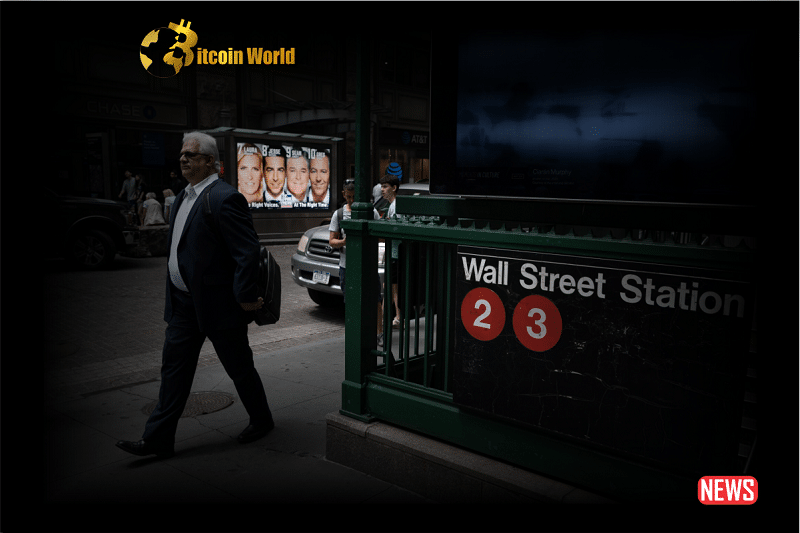Ever felt that sudden drop in your stomach on a rollercoaster? That’s kind of what Wall Street experienced recently. The tech-heavy Nasdaq took a tumble, and the other major indexes followed suit. What was the trigger? Well, the Federal Reserve’s latest meeting minutes dropped, and they revealed something that got everyone talking: growing worries about inflation.
Why Did Wall Street Take a Hit?
Let’s break down what happened on that red-letter day for the markets:
- The Dow Jones Industrial Average dipped by 0.52%, landing at 34,765.74.
- The broader S&P 500 saw a 0.76% decrease, closing at 4,404.33.
- But the Nasdaq Composite felt the biggest sting, falling by 1.15% to 13,474.63.
Meanwhile, the dollar held its ground against the pound and euro but softened slightly against the yen. Chris Beauchamp, a sharp mind at IG, summed it up well: after a strong run, US stocks were reminded that August can bring its own set of worries, particularly concerning inflation and economic anxieties emanating from places like China.
What Did the Fed’s Minutes Reveal About Inflation Worries?
Remember that recent decision by the Federal Reserve to nudge interest rates up a quarter of a percentage point? The minutes from that meeting offered a peek behind the curtain, revealing a bit of a tug-of-war within the Federal Open Market Committee (FOMC). Here’s the gist:
- Inflation is a Hot Topic: A significant number of officials voiced concerns about persistent inflation, highlighting the “upside risks.” This suggests they’re keeping a close eye on whether prices will continue to climb.
- To Tighten or Not to Tighten? While many leaned towards the need for further monetary policy tightening to combat inflation, others expressed caution about the potential impact on the economy.
- Economic Headwinds on the Horizon? Despite the current economic resilience, some Fed members are bracing for a possible slowdown in GDP growth and a slightly cooler job market.
Nancy Vanden Houten from Oxford Economics pointed out that as the Fed approaches the end of its rate-hiking cycle, the conversation is shifting towards when to potentially ease up on reducing its balance sheet. This is something to watch closely!
Is It All Doom and Gloom? Signs of Strength in the Economy
Amidst the market jitters, it’s not all storm clouds. Some parts of the economy are showing surprising strength. Let’s take a look:
- Industrial Production Surges: Factory output jumped by a solid 1% in July, beating expectations. Blame it on the summer heat (driving up utility use) and a rebound in vehicle production.
- Housing Market Showing Life: After a dip in June, housing starts bounced back in July, rising by 3.9%. Building permits also saw a slight increase, hinting at continued construction activity.
So, while Wall Street might be feeling the pinch, these indicators suggest that parts of the real economy are still chugging along.
How Are Companies Navigating These Uncertain Times?
It’s a mixed bag for individual companies right now. Let’s see some examples:
| Company | Performance | Key Takeaway |
|---|---|---|
| Target Corporation | Stock up 2.96% | Beat earnings expectations but lowered full-year guidance. |
| TJX Companies | Stock up 4.13% | Reported strong second-quarter earnings, exceeding market predictions. |
| H&R Block | Stock up 9.7% | Posted impressive earnings and raised its full-year outlook. |
This shows that even in a shaky market, some companies are finding ways to thrive. It highlights the importance of looking beyond broad market trends and analyzing individual company performance.
What’s the Takeaway From This Market Volatility?
The recent dip on Wall Street, sparked by concerns over inflation and the Fed’s stance, underscores the delicate balance the economy is currently navigating. Here are some key insights:
- Inflation Remains a Key Focus: The Fed’s minutes clearly show that inflation is a top priority, and this will likely continue to influence monetary policy decisions.
- Divergent Views at the Fed: There’s no single consensus on the best path forward, which adds an element of uncertainty to future policy moves.
- Economic Resilience is Evident: Despite market jitters, certain sectors like industrial production and housing are demonstrating underlying strength.
- Company Performance Matters: Even in a down market, strong individual company performance can lead to positive outcomes for investors.
Looking Ahead: What Should Investors Watch For?
As the market continues to react to economic data and central bank pronouncements, keeping an eye on the following will be crucial:
- Upcoming Economic Data: Pay close attention to inflation reports, GDP figures, and employment numbers.
- Central Bank Commentary: The upcoming Jackson Hole symposium will be a key event where central bankers will likely share their views on the economic outlook and inflation.
- Company Earnings: Continue to monitor individual company performance for signs of strength or weakness.
In conclusion, the recent Wall Street downturn serves as a reminder that the economic landscape is constantly evolving. While inflation concerns and the Fed’s deliberations have injected volatility into the market, underlying economic strengths and individual company successes offer glimmers of hope. Staying informed and adaptable will be key for investors navigating these intricate times.
Disclaimer: The information provided is not trading advice, Bitcoinworld.co.in holds no liability for any investments made based on the information provided on this page. We strongly recommend independent research and/or consultation with a qualified professional before making any investment decisions.


